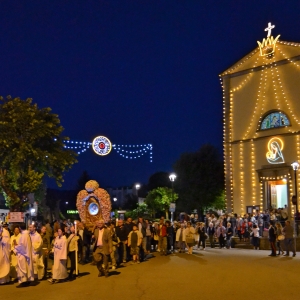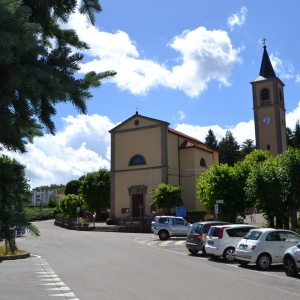
Santuario della Madonna dei Fornelli
San Benedetto Val di Sambro
Where:
Contacts
The name Madonna dei Fornelli (Stoves) refers to the remote tradition of transforming wood into charcoal to face the area’s harsh winters at 800 meters above sea level. The stoves were lit in the woods and also special ovens were used to transform stones into lime, sending long plumes of smoke that rose skywards. The current religious building dates back to the early 1900s and became a Parish and Shrine in 1960. But there was already a chapel there, probably at the beginning of the 1600s, with the peculiar dedication to the Madonna della Neve (Our Lady of the Snow). The name derived from an extraordinary event in this sacred place, a snowfall that occurred on August 5, sometime around 1610. This event was quite similar to an occurrence, centuries before, at the Basilica of Santa Maria Maggiore in Rome, and thus intensified the devotion to Our Lady so much that it became a point of reference for all the neighbouring communities. Later, around the time of the great plague in 1630, as can be read in the inscriptions on the entrance architrave, the inhabitants elected the image of Mary as their protector as She had miraculously preserved them from the scourge. Following this grace received, all the neighbouring communities agreed to build a bigger, more dignified place of worship. Some centuries later, Our Lady renewed her grace, during the terrible cholera epidemic that raged in the area in 1855. The image of the Virgin and Child, a large oil on copper, the same image that was venerated in the early 1600s, is now in the apse and dominates the main altar. In 1994 the construction of the current bell tower, 33 meters high with an octagonal base, was completed. There are two festivals linked to the Shrines: the Ascension, with a procession to Castel dell’Alpi, and August 5, in memory of the blessed snow that made the Fornelli the village of the Our Lady of the Snow.



